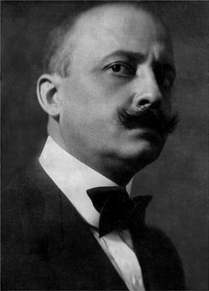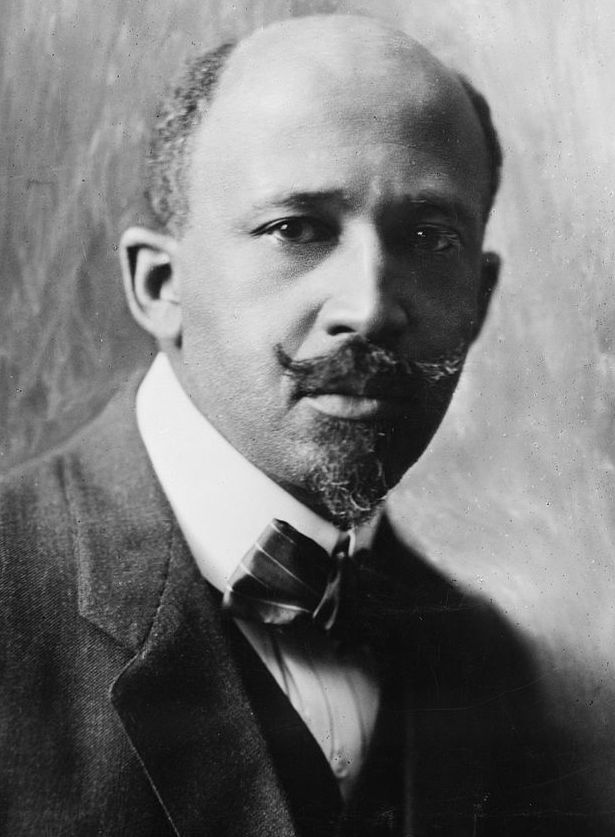By Mahalia Cooks
Fayetteville State University, Class of 2019
Davidson Research Initiative Grant (Summer 2018)
The early 20th century avant-garde came to be largely through the charismatic leadership of white, European male artists who wanted to revolutionize art and do away with traditional art and ideas. Antonis Glytzouris notes that many avant-gardists were anti-capitalist and called for fellow artists and citizens alike to abandon the ideals of society and live freely as a “challenge to the bourgeois status quo” (133). Avant-gardists advocated not just for creative freedom, but for economic and social freedom too. Some notable avant-garde movements include Dadaism, Surrealism, and Futurism.

“The Futurist Movement in Italy,” an article published in New York in 1911, depicts Filippo T. Marinetti as one of the major leaders of the avant-garde and, more specifically, as the leader of Futurism—the one “who conducts the organ” (206). Marinetti is a prime example of the type of artist that dominated the 20th century avant-garde—white and male. The artists considered recognizable and significant within their respective movements were all white males, although they hailed from different European countries. Women were often ignored, underestimated, or discouraged from taking up art because it was not a fitting occupation for women; marriage was of utmost importance, not learning the arts. Artists of color were mentioned even less.

One such artist of color who was writing and publishing around the same time that Futurism was kicking off was W.E.B. Du Bois. He published his book The Souls of Black Folk in 1903. The Souls of Black Folk was a revolutionary book for its time, and as Lucas Dietrich describes it, it became “an instant literary classic” (308). Not only did Du Bois talk about his own racial experiences in America, but he combined different genres within the book to create a narrative structure that effectively portrayed the African American experience at large. Du Bois used song, poetry, and prose within The Souls of Black Folk to tell his own personal stories and to relate them to the larger experience of being black in America in the 1900s.
Although Du Bois and Marinetti both exemplified innovation, they received a lot of pushback in return. However, the overall outcomes of the resistance they received turned out differently for each man. According to Richard Jensen, Marinetti’s “Manifesto of Futurism”, published in 1909, was too radical for the people of Italy and was well-received only by other radical artists; at Futurist gatherings, Italian citizens would come to throw rotten food and mock the Futurist’s ideas (37). Marinetti openly declared his support of violence and misogyny with lines such as “we intend to glorify war—the only hygiene of the world—militarism, patriotism…and contempt for woman” (51). Writing for the British magazine The Fortnightly Review in 1914, Henry Newbolt asserted that English readers did not take the manifesto seriously and merely found it amusing; he himself referred to it as an “exasperated, sanguine, grotesque” piece of work (807). Yet Newbolt mixed his criticism with praise for Marinetti’s talents and expressed his gratitude for the Futurists and for Marinetti because of their offerings of “greater freedom and independence in expression” (818).
The Souls of Black Folk also garnered mixed reception. Lucas Dietrich describes the responses from northern readers as being complicated, influenced by their own “racialized reading” of Du Bois’s “mythic elements and religious passion” (322). Positive reviews either reinforced racial stereotypes of black people being more emotional than white people or underestimated the dire race relations within the United States (Dietrich 322). Negative reviews from northern papers like The New York Times and the Chicago Tribune criticized Du Bois’s politics on race and refused to acknowledge the possibility that black people could have success within literary circles (Dietrich 322-323). If reviewers did not criticize the book or give it backhanded compliments, the alternative was to ignore it completely. Tuskegee publishers and the southern white press ignored The Souls of Black Folk; when some southern white reviewers did give their opinions on the book, they were explicitly racist (Dietrich 321). Surprisingly, some of the negative reviews, especially ones from the north, ended up recommending Du Bois’s book anyway, promoting it as way to better understand the character of black people (Dietrich 323). These reviewers thought the book would be an effective tool to aid in observing and comprehending black culture, although ironically, they disregarded the book’s political message.
Despite mixed critical reception in the 1900s, both Du Bois and Marinetti today are regarded as great artistic leaders. However, each man’s leadership is portrayed from very different perspectives. The Souls of Black Folk is not the kind of avant-gardism that one would typically think of when it comes to literature—such as the bending of grammar rules, vocabulary, and syntax—but the book still brought innovation through its mixing of genres, combining song and poetry with radical political thought. Even though this approach would have been well-suited to the avant-garde, Du Bois is not considered a member of the avant-garde. It is more common to see Du Bois referred to as a leader of the Harlem Renaissance—alternatively named the New Negro Renaissance—which arose at the same time as the avant-garde. Davarian Baldwin and Minkah Makalani argue that the New Negro Renaissance is a more accurate name than the Harlem Renaissance because it extended well beyond Harlem and even beyond the United States, capturing “the strivings of the darker races across the globe”—including, but not limited to, Africa, Cuba, and the Philippines (2).
Like Du Bois, the New Negro Renaissance is not typically recognized as part of the avant-garde. Literature by black writers is “black literature” or “African American literature”. Poetry is “black poetry.” Beginning in the early 20th century and continuing to today, these artists have been put into separate categories based on race. Although this might seem fine because it meant they had a whole category for themselves, what it really did was isolate black writers and keep their work from being acknowledged within the avant-garde. This categorization produces what Anthony Reed calls a “racialized reading,” which distinguishes writing by black authors by only a few narrow definitions and does not leave room for much exploration (7).
In “Modernism and the Harlem Renaissance,” Houston A. Baker expresses how near-impossible it is for an “Afro-American student of literature like me—one unconceived in the philosophies of Anglo-American, British, and Irish moderns—to find intimacy in…a civilization that, in its prototypical form, is exclusively Western, preeminently bourgeoisie, and optically white” (86). Although Baker’s article was written specifically with modernism in mind, his words are just as applicable to the early 20th-century avant-garde. Being that the historical avant-garde was extremely white and male dominated, their experiences became the default, excluding other voices and perspectives, then and now.
Today, Marinetti’s career remains racially unmarked even though he often mentioned race and drew on racial stereotypes, such as the racist depictions of Arabs and North Africans in his book Mafarka (“The Futurist Movement” 206). People do not associate Marinetti with a particular race; he is simply “the leader of Futurism,” because of his standing as a white man within the avant-garde. The term “avant-garde” itself is racially unmarked, in contrast with terms like “New Negro Renaissance” or “Harlem Renaissance.” Artists like Du Bois who were non-white could not be separated from their race even if their art was not explicitly political, which resulted in Du Bois being referred to as an “African-American leader” or “the leader of the Harlem Renaissance.”
The way to combat this categorization, whether it be conscious or subconscious, is for more avant-garde scholars to include Du Bois and other experimentalist black artists of the 1900s within the scope of the avant-garde. For all the work Du Bois did in ushering in a new era of literary genres and creative thought, he certainly meets the criteria for being avant-garde. Avant-garde scholarship must acknowledge that race and politics cannot be separated from literature, or from art as whole. This goes for artists of any race; literature that rails against societal norms and oppressive institutions is, in its essence, political, due to its subversive nature. Avant-gardists of the 20th century, in their goal to be rebellious, touted themselves as outside the realm of governmental sway and politics, including race politics, but there is no movement that can be completely detached from the rest of society. The only way for there to be accurate portrayal of what the avant-garde embodied in the 1900s is to include those who were left in the shadows and to elevate the works of people from all backgrounds—not just the white default.
Works Cited
Baker, Houston A. “Modernism and the Harlem Renaissance.” American Quarterly, vol. 39, no. 1, 1987, pp. 84-97. JSTOR, www.jstor.org/stable/2712631.
Dietrich, Louis. “At the Dawning of the Twentieth Century: W.E.B. Du Bois, A.C. McClurg & Co., and the Early Circulation of The Souls of Black Folk.” Book History, vol. 20, 2017, pp. 307-329. JHU, https://muse.jhu.edu/article/674972.
“The Futurist Movement in Italy.” Current Literature, vol. 51, no. 2, 1911, pp. 206-208. ProQuest, https://ezproxy.lib.davidson.edu/login?url=https://search.proquest.com/docview/124796742?accountid=10427.
Glytzouris, Antonis. “On the Emergence of European Avant-Garde Theatre.” Theatre History Studies, vol. 28, 2008, pp. 131-146,201. ProQuest, https://search-proquest-com.uncfsu.idm.oclc.org/docview/214040869?accountid=10813.
“Introduction: New Negroes Forging a New World.” Escape from New York: The New Negro Renaissance Beyond Harlem, edited by Davarian L. Baldwin and Minkah Makalani, University of Minnesota Press, 2013. ProQuest Ebook Central, https://ebookcentral.proquest.com/lib/davidson/detail.action?docID=1418415.
Jensen, Richard. “Futurism and Fascism.” History Today, vol. 45, no. 11, 1995, pp. 35-41. ProQuest, https://search-proquest-com.uncfsu.idm.oclc.org/docview/202810326?accountid=10813.
Marinetti, F. T. “Manifesto of Futurism.” Futurism: An Anthology, edited by Rainey, Lawrence, Christine Poggi, and Laura Wittman, Yale University Press, 2009. JSTOR, www.jstor.org/stable/j.ctt1nq4q3.
Newbolt, Henry. “Futurism and Form in Poetry.” Fortnightly Review, vol. 95, no. 569, 1914, pp. 804-818. ProQuest, https://ezproxy.lib.davidson.edu/login?url=https://search.proquest.com/docview/2447699?accountid=10427.
Reed, Anthony. Freedom Time: The Poetics and Politics of Black Experimental Writing. Johns Hopkins University Press, 2014. Worldcat, https://davidson.on.worldcat.org/oclc/894227628.